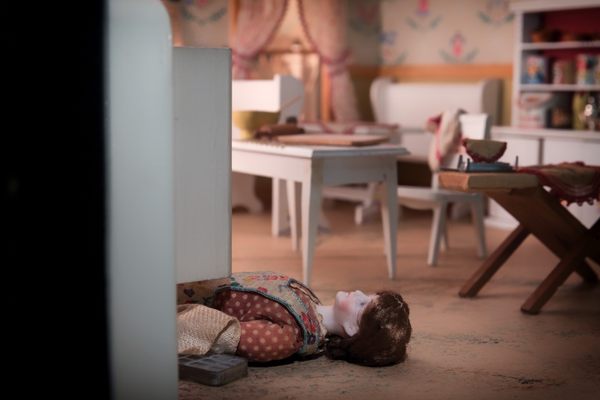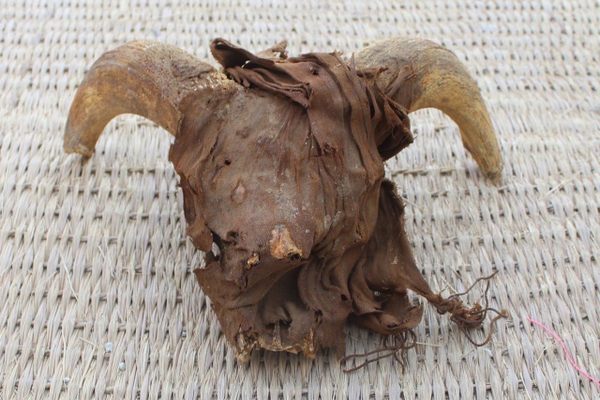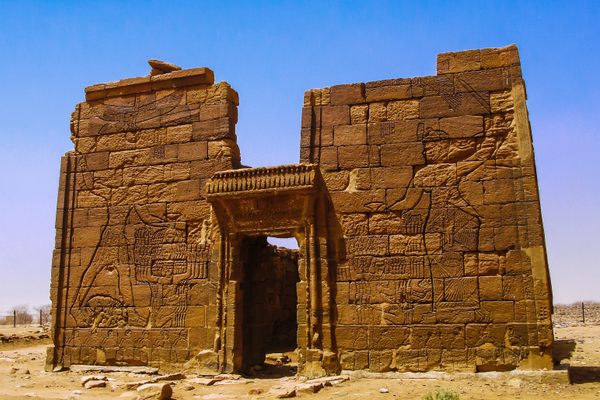Beneath an Old Fireplace, Evidence of the Spirituality of the Enslaved
The finds are also enriching understanding of the formative years of famed abolitionist Harriet Tubman.
In her 1931 documentation of African-American spiritual practices, author and anthropologist Zora Neale Hurston wrote about Hoodoo, a set of traditions created by enslaved Africans in North America, with roots in indigenous West African religion. These practices were fundamental to the way the enslaved people defined their relationship to the world, to life, to death, and to each other. In the late 1980s, archaeologists began to make connections between these traditions and some of the material evidence they were uncovering at former plantation sites. From the discovery of crystals and other objects during 1986 and 1991 excavations at the Mont Clare Mansion in Baltimore, to the bundle of objects unearthed beneath a street in Annapolis in 2008, these artifacts can paint a clearer, more nuanced picture of the lives of enslaved people.
Recently, Maryland, the site of those other finds, has continued to produce such historical insights. In August 2022, a team of archaeologists led by Julie Schablitsky, chief of cultural resources at the Maryland Department of Transportation, discovered another spiritual cache at the Thompson Farm, the birthplace of abolitionist Harriet Tubman, in Dorchester County. This latest discovery, along with the foundations of a home, provide a window into the complex spiritual lives of the 40 or so people enslaved at Anthony Thompson’s plantation, and a new perspective on where the famed Underground Railroad activist was raised.
Since fall 2020, Schablitsky and her team have been excavating public and private property that was once part of the farm. Their first discovery was the home of Ben Ross, Tubman’s father. On the land that is now part of the Blackwater National Wildlife Refuge, they also found artifacts dating back to the 1800s, including nails, bricks, and dish fragments.

Then Schablitsky started thinking about the other individuals enslaved by Thompson on his 1,000-acre farm. “We began to look across the entire area, including on private lands,” she says. Two years into their excavation efforts, they discovered foundations of a brick home containing hundreds of artifacts dating between 1800 and 1840. Among them was a curious assemblage that had been buried under what would have been a fireplace: an unexpected glass trinket, ceramics, pieces of metal, in a place that they must have been placed deliberately.
Based on the house’s foundation, they identified the home as having belonged to an enslaved overseer named Jerry Manokey. “Other archaeologists who have done similar studies have found that when you have a building that is well-built, with a brick foundation, it would have been a more stately home rather than a more rustic cabin that is inexpensively built,” says Schablitksy. But the artifacts tell a slightly different story. “Looking at the artifacts, they were showing someone who was impoverished, and that difference between the artifacts in the home [and the home itself] many times will signal that you have the home of an overseer.” Such enslaved overseers were a key part of plantation life and the social dynamics of slavery.
Many academics and historians have considered how much of their homelands remained with enslaved people when they arrived in the Americas. But there are ongoing questions about how much of these traditions survived, what they would have looked like, and how they evolved generation after generation. According to Schablitsky, foodways, such as recipes, and spiritual practices were some of the last cultural norms to disappear or evolve into something unrecognizable. “Archaeologists have the advantage of sometimes being able to tease those details out of the archaeological record,” she says.

Hoodoo was created by enslaved Africans between the 16th and 19th centuries, and is composed of two components: the spiritual (conjure) and the practical (root work). Conjure involves working with and calling upon spirits and ancestors, while root work involves working with organic material for healing, self-defense, and protection. According to Yvonne Chireau, a professor of religion at Swarthmore College, Hoodoo can be used as an umbrella term to characterize the intermingling of African spiritual traditions with Christianity and sometimes even Indigenous traditions. “For enslaved people, these practices were very important and very useful in order to get through life,” she says.
The spiritual bundle at the Thompson Farm was the first Schabitsky had encountered as an archaeologist. At the time of the discovery, her team was working on two sites: the Ross home and the Manokey home. “I got a picture sent to me saying, ‘Hey, we just found this,’” she says: a glass, heart-shaped perfume bottle stopper. Schablitsky found it odd. Needing to know more, she jumped into her UTV and drove through the swamp for about a mile. “I asked them where it came from, thinking it might have just been on the upper layer,” she says, meaning it could have been deposited in modern times. But her team said that it was farther down, where the fireplace was. There were no other objects immediately around it.

The team continued to dig, and the next thing to pop out was half of a ceramic dish. As they dug, more objects appeared: a copper alloy button, iron nails. “It’s not only about what we’re finding, but also where we’re finding it,” she says. Locally, at the time, it was believed that spirits would come in and out of the home through the fireplace, so placing spiritual objects beneath it protected those inside from bad spirits or negative energy.
Whitney Battle-Baptiste, an anthropologist at the University of Massachusetts, Amherst says that the placement of these artifacts is extremely important. In order for the enslaved to be able to practice their spiritual traditions, they had to hide their tools from Christian enslavers. “They weren’t going to build a little temple over here or put a bunch of rocks and pots where they wanted to because it wouldn’t go over on a plantation being controlled by a Christian,” she says. According to Battle-Baptiste, for those practicing those spiritual traditions and using what they had for protection, certain items were buried and hidden in specific areas. “There’s this idea of keeping spaces that are open protected,” she says. “So you will find [these] artifacts near doorways and fireplaces.”
Archaeologists are now more aware of the presence of African spiritual practices in the archaeological record. “Once archaeologists like Mark Leone [who has excavated in Annapolis and Maryland’s Eastern Shore for decades] began to recognize these artifact clusters, these spirit bundles, everybody else began listening and started to become more vigilant about the things they were finding,” says Schablitsky.

Furthermore, for years, the birthplace and early life of Harriet Tubman had been unknown to historians and archaeologists. With every discovery at the Thompson Farm, new pieces of the puzzle fall into place. “You hear all the time about Harriet Tubman and her faith in God, but she was also living alongside people who may have believed in God, but they also turned back to their West African spirituality that was passed down by their parents and grandparents,” Schablitsky says.
According to Battle-Baptiste, this increased attention to the lives of the enslaved should include revisiting existing collections of artifacts—collections that could take on a whole new meaning. “What does it look like when someone who comes from Black Studies incorporates that with anthropology and learns the practices of archaeology, and then looks at a collection and asks different questions?”
What may look like a simple heart-shaped bottle stopper could carry something much more profound.



























Follow us on Twitter to get the latest on the world's hidden wonders.
Like us on Facebook to get the latest on the world's hidden wonders.
Follow us on Twitter Like us on Facebook